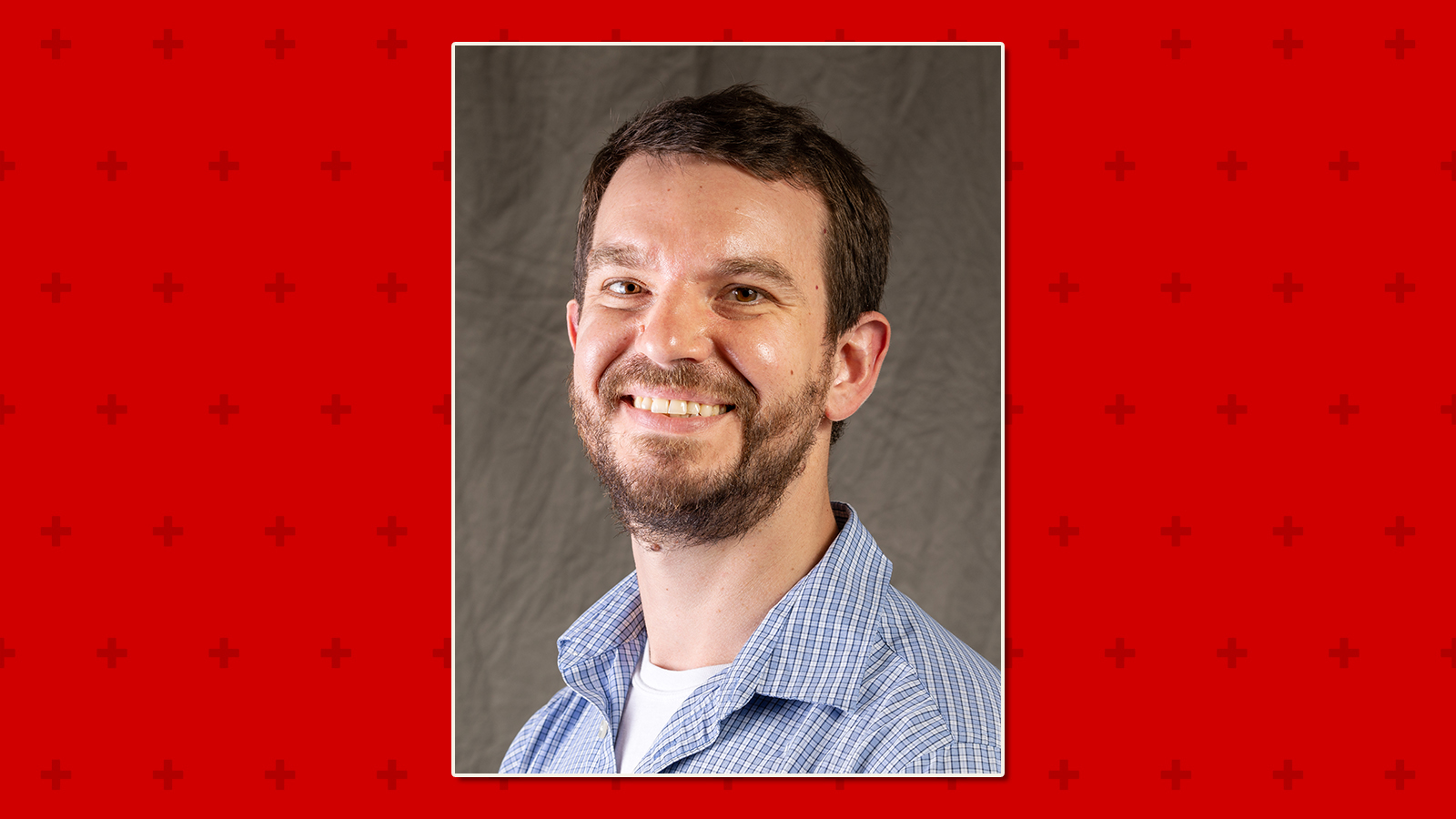
Kevin Pitt eager to translate communication technology from research lab to clinical practice
27 Nov 2019 By Kelcey Buck
Kevin Pitt joined the speech-language pathology faculty at the University of Nebraska-Lincoln’s Department of Special Education and Communication Disorders excited to help move communication technology from research to clinical use, and his path to Lincoln, Nebraska, began in his hometown of Lincoln, England.
“We grew up providing respite care for children with severe physical impairments, such as cerebral palsy,” Pitt said. “It was actually a misplaced phone call my mom and dad made. They had decided to be foster parents so they found this organization called the National Children’s Home, which they thought was a fostering agency. When they called to find out more information, they discovered it was actually a respite care program for children with primarily severe physical disabilities.”
From the time he was about five years old, Pitt enjoyed having children from the respite care program visit the family’s home on weekends. For his parents, it was like having grandchildren. For him, it was like a huge group of brothers and sisters. It was also his first introduction to speech-language pathology, as many of the children worked with speech therapists.
Several years later, that experience and exposure would serve as a driving force behind his work. Pitt spent two years doing photography after high school, before moving to the United States. He earned associate and bachelor’s degrees, and began working as an MRI technologist at St. Louis University Hospital before navigating toward his current area of interest in providing augmentative and alternative communication (AAC) access to individuals with severe physical impairments, primarily via brain-computer interface (BCI) techniques, which may allow for computer control without any form of reliable physical movement.
“A lot of my interest in AAC and BCI stems from my experience with respite care and seeing individuals there who really didn’t have a form of communication,” Pitt said. “If I were ever to return to England, I wanted to do something I could take back that would really help those kids.”
He decided to pursue speech-language pathology and ended up heading to Springfield, Missouri, to complete his master’s in communication sciences and disorders at Missouri State University. While there, Pitt’s interest in neurology and high-tech AAC systems began to grow. He worked with the late Ronald Netsell, who helped steer Pitt toward both AAC and BCI. Pitt began working closely with associate professor Alana Mantie-Kozlowski, who became his mentor for his master’s work and encouraged him to pursue his doctorate.
After finishing his clinical fellowship, Pitt decided he wanted to follow Mantie-Kozlowski’s advice. In looking for a doctoral program, he discovered that Jonathan Brumberg, whose research interest centers on the neurological mechanisms underlying speech and communication and their use in BCI, was at the University of Kansas.
“Thankfully, he had an option to give me a shot to be in his lab,” Pitt said.
Five years after starting his work in Brumberg’s Speech and Applied Neuroscience Lab, Pitt had completed his doctoral program and set out to begin his own faculty career at Nebraska. Now, he is the director of the Augmentative and Alternative Communication Translation (AACT) Lab, where he hopes to help move new AAC access methods, such as BCI, from research labs and into clinical practice.
“A big emphasis of mine is viewing BCI as another access method alongside existing AAC methods, such as eye-gaze, so we can seek to support communication across the lifespan,” Pitt explained. “I’m trying to look at the applications of BCIs to broad populations, including both adults and children, and to help BCI be seen as another option we can consider in clinical assessment. The unique thing about BCI is that it translates brain activity into computer control, meaning you don’t necessarily have to have any physical motor movement to use a communication device.”
Pitt’s interest is in non-invasive BCIs where an individual wears a cap which contains electrodes that record brain activity at the level of the scalp. Through his lab, Pitt hopes to improve AAC services both now and in the future, including training others who may interact with a BCI user in how to work with the technology.
“I really hope to impact AAC service provision to make sure people are getting the best AAC device that could suit their communication abilities, and not just for basic wants and needs but for activities of daily living and social interaction,” Pitt said. “It doesn’t help if you’ve got a client sitting in the clinic with you with a BCI device if nobody has any idea how to use it. I hope we can start to look at what technology is coming and preemptively start to integrate these things into clinical practice, training people so when it does come on their doorstep, they know what to do with it.”
Special Education and Communication Disorders